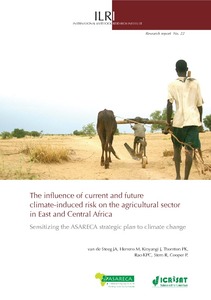Resource information
Rainfed agriculture is and will remain the dominant source of staple food production for the majority of the rural poor in Eastern and Central Africa (ECA). It is clear that larger investments in agriculture by a broad range of stakeholders will be required if this sector is to meet the food
security requirements of tomorrow’s Africa. Many factors contribute to the current low levels of investment, but production uncertainty associated with between- and within-season rainfall variability remains a fundamental constraint to many investors who often overestimate the impact of climate induced uncertainty.
The climate of Africa is warmer than it was 100 years ago. Model-based predictions of future greenhouse gas-induced climate change for the continent clearly suggest that this warming will continue and, in most scenarios, accelerate. The projections for rainfall are less uniform; large regional differences exist in rainfall variability. However, there is likely to be an increase in
annual mean precipitation in East Africa.


